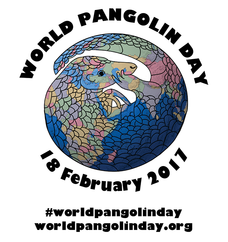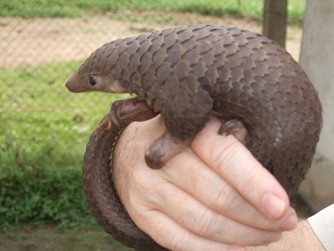
They are peaceful little animals who live either in hollow trees or in burrows extending up to 11 feet deep in the ground. Pangolins are mostly nocturnal and solitary, getting together only to mate, and they live on insects. Despite their heavy and bulky look pangolins are also good swimmers.
Pangolins are protected by an international ban on hunting and killing them, but they are poached because of the mistaken idea that the pangolin scales are very good medicinally and because their flesh is considered a delicacy to eat, particularly in the far east. The scales are actually keratin like our fingernails and have never been proven to have any medicinal value.
Many attempts have been made to reproduce pangolins in captivity but due to their reliance on wide-ranging habitats and particular diets, these attempts have mostly not been successful. They also tend to develop ulcers and diseases in captivity. Recently, however; researches have been able to improve artificial pangolin habitats which is bringing a little hope for the future.
Just looking at these odd and rare creatures gives me an appreciation of the vastness of our world and all of the animals and creatures that inhabit it with us. Each has a unique place in the ecosystem and we should value them and try to give them their space in our universe. Learn more on the Internet. Here's to the pangolin!

 RSS Feed
RSS Feed